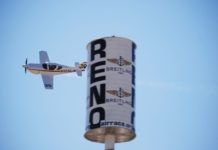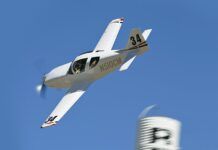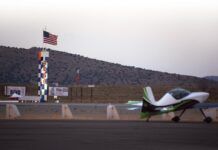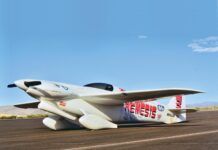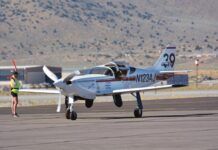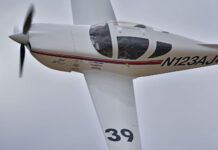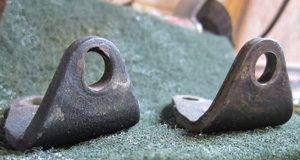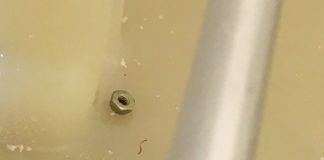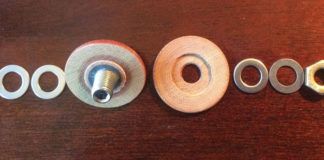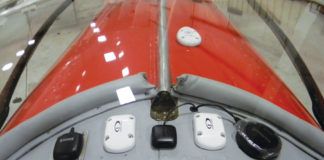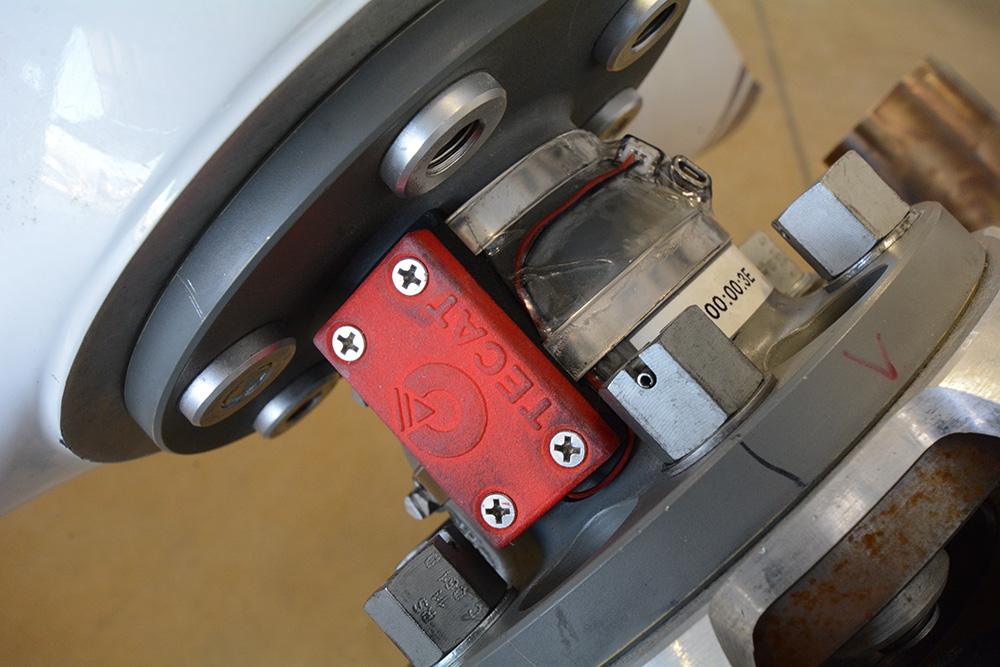
During the big-engine peak of the 1940s and ‘50s large radial engines all used a hydraulically-actuated torquemeter. By sensing the engine’s output specific power and fuel consumption settings were accurately set, along with providing some engine diagnostic capabilities.
Now TECAT, an industrial torque/vibration sensor specialist, is debuting a much faster, more accurate digital torquemeter suitable for retrofit on typical experimentals. First shown at Air Venture this summer, the system has been creating a real stir among air racers at Reno this week. Fred Roscher of 51Aero has already incorporated the TECAM data feed into his telemetry system fitted to John Parker’s Thunder Mustang II and many other crew chiefs say they know what they are asking Santa Claus for Christmas.
The new unit gets data from a strain gauge and an accelerometer, and because it’s digital, it samples at a heroic 4000 hertz. That’s fast enough to see cylinder-by-cylinder events. Data is transferred wirelessly to a laptop/dongle combination, typically up to 100 ft distance.
TECAT’s sensor is optimized to run with minimal electrical power, making its 400 milliamp battery good for approximately 200 hours of operation. Depending on usage this could be a couple of years.
Temperature limit on the standard TECAT is 80 degrees C which should be good for nearly any under-cowl mounting. A high-temp version is good for 180 C, so it can go inside the engine, albeit with less battery life.
Beauty of the TECAM is it turns an engine into a dyno operating in the real world. Thus, almost every parameter tested on a traditional engine dynamometer can be obtained in-flight. Torque would be read out in real time, with horsepower, percent power, calculating fuel flows and other basics following from there. But the TECAM also detects vibrations and accelerations in three axis with surprising sensitivity (The display unit on a static engine in the Reno pits output a steady stream of vibrations from people walking around the display, engine noise from the races and so on). This points to its true worth as an engineering development tool; much good work on engine and propeller vibration issues seems possible via the TECAT.
Definitely pricey at around $5,000, the TECAT torquemeter is obviously not for all of us, but it promises a powerful new look into the forces and output our engines and propellers are dealing with.
Visit tecatperformance.com for more information.

